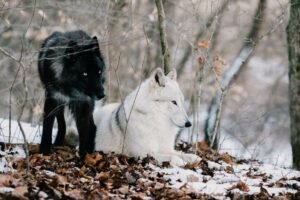Bees, wasps, and hornets share similarities but are distinctly different in their behaviors and characteristics. Let’s delve into the facts about these winged insects, exploring their habitats, behaviors, and unique traits.
All three—bees, wasps, and hornets—possess the ability to deliver painful stings. However, there’s a crucial distinction; certain species perish after stinging humans, unlike when they sting other animals. Honey bees, with their piercing stingers, often leave them embedded in human flesh, a phenomenon not experienced by most animals.
These insects all reside in hives or combs, typically found in the shelter of trees to avoid harsh weather conditions. Their colonies thrive in warm weather, developing during spring and early summer. Wasps and hornets, however, make their presence felt at picnics when food becomes scarce in late summer.
While sharing a color palette of brown/black, yellow, and some white, the patterns on bees, wasps, and hornets set them apart. This becomes evident as we explore their behaviors.
Bees, like the familiar honey bee and bumblebee, are essential for plant reproduction. Worker bees tirelessly forage for nectar and pollen, contributing not only to the hive’s survival but also producing honey. The bumblebee, larger than its honeybee counterpart, has distinctive features, including a red/orange or white tail.
Unlike their pollinator counterparts, wasps are hostile and predatory. Their slender waists, pointed abdomens, and lack of hair distinguish them from bees. Wasps, categorized as gregarious or solitary, construct nests based on their behavior. Social wasps build colonies of up to 5,000 members, while solitary wasps, like “cicada killers,” hunt prey for their offspring.
As summer concludes, worker wasps become aggressive, having fulfilled their duties. Their quest for sugar becomes intense, leading to bold and tenacious behavior. Reports even suggest wasps getting “drunk” on fermented fruit, prompting warnings from organizations like the British Red Cross.
While seeking nectar, wasps unintentionally contribute to pollination by moving from plant to plant with pollen. Though their impact may not match that of bees, wasps play a valuable role in the ecological balance, as highlighted by the Natural History Museum.
Wasps and bees fly around humans to assess their size, shape, and potential sources of food or nesting spots. This behavior, as explained on Quora, involves side-to-side movements to build a mental image through parallax and direct observation.
Hornet vs. Wasp: Identifying the Differences
Distinguishing between wasps and hornets involves noting features like wider heads and rounded abdomens, making hornets a specific subset of wasps. This information, sourced from Planet Natural, provides a concise guide to differentiating the two.
Most wasps are predators and will sting or bite when threatened. According to Truly Nolen, aerial nesters, and yellow jackets are particularly territorial and can use both stinging and biting as defensive measures.
The Spiritual Message of a Wasp
The symbolism of a wasp emphasizes taking action and having a plan to achieve success. As outlined by California Psychics, a wasp sighting conveys the message of actively working towards goals rather than merely contemplating ideas.
The aggressive nature of wasps is attributed to their protective instincts over their paper-like nests. This aggression is especially evident when defending against perceived threats, leading to painful stings, as mentioned by Wondercide.
In case a hornet lands on you, experts advise calmly brushing it off and walking away. Prevention.com provides insights into the best practices for treating a hornet sting, emphasizing the importance of avoiding motives for further aggression.
The duration of wasps’ memory is a topic of interest. While specific information about how long wasps remember individuals is not available, their territorial behavior suggests caution when encountering them.
Considering the fear associated with hornets, wasps, and bees, the general advice is to freeze or slowly walk away when encountering a single hornet. This precautionary measure, detailed about the wonderside outdoors by Wondercide, highlights the importance of understanding their behavior for personal safety.
Dealing with Stings
If you find yourself on the unfortunate receiving end of a bee, wasp, or hornet sting, start by remaining calm. Panicking can exacerbate the situation. Assess the situation and ensure you are in a safe environment.
Stinger Removal
For bee stings, it’s crucial to remove the stinger promptly. Use a straight-edged object like a credit card to scrape it out. Avoid using tweezers, as squeezing the stinger can release more venom. With wasps and hornets, there’s typically no stinger left behind.
Wash the Area
After removing the stinger, clean the affected area with soap and water. This helps minimize the risk of infection. Gently pat the area dry with a clean cloth. Avoid vigorous rubbing, as it may aggravate the sting site.
Cold Compress Application
To alleviate pain and swelling, apply a cold compress or ice pack to the sting site. Wrap the ice in a thin cloth and place it on the affected area for about 15 minutes. This can help reduce inflammation and provide relief.
Over-the-Counter Remedies
Consider taking an over-the-counter antihistamine or using an anti-itch cream to address itching and discomfort. These remedies can be particularly helpful if you experience allergic reactions or more severe symptoms.
Pain Management
Over-the-counter pain relievers like ibuprofen or acetaminophen can assist in managing pain associated with the sting. Follow the recommended dosage instructions and consult a healthcare professional if needed.
Watch for Allergic Reactions
Monitor your body for signs of an allergic reaction, such as difficulty breathing, swelling of the face or throat, or a rapid heartbeat. If you experience any severe symptoms, seek immediate medical attention.
Seek Medical Help if Necessary
While most stings cause mild reactions, some individuals may have severe allergies. If you exhibit signs of anaphylaxis, including difficulty breathing or a drop in blood pressure, call emergency services right away.
Preventive Measures
To avoid stings in the first place, be mindful of your surroundings, especially in areas with high bee, wasp, or hornet activity. Use caution when approaching nests, and keep food and sugary drinks covered when outdoors.
Educate Yourself
Learn to identify different types of bees, wasps, and hornets to better understand their behavior. This knowledge can empower you to take precautionary measures and know when to seek professional pest control assistance.
Stay Calm and Confident
In the event of a sting, remember that most reactions are mild and can be effectively managed with the right approach. Stay calm, follow these tips, and prioritize your safety in any encounter with bees, wasps, or hornets.
Understanding the distinctions among bees, wasps, and hornets sheds light on their significance in ecosystems. As we navigate their behaviors and habitats, we gain valuable insights into these fascinating insects without the distractions of outdated references or irrelevant details.

In the vast and mysterious world of marine animals, there lies a common misconception that…

Are you drawn to the enigmatic allure of wolves? Venture into an all-encompassing exploration of…

Octopuses are among the most fascinating creatures of the marine world, not just because of…

Contrary to popular belief, the majestic creatures roaming North America are not American buffalo but…

